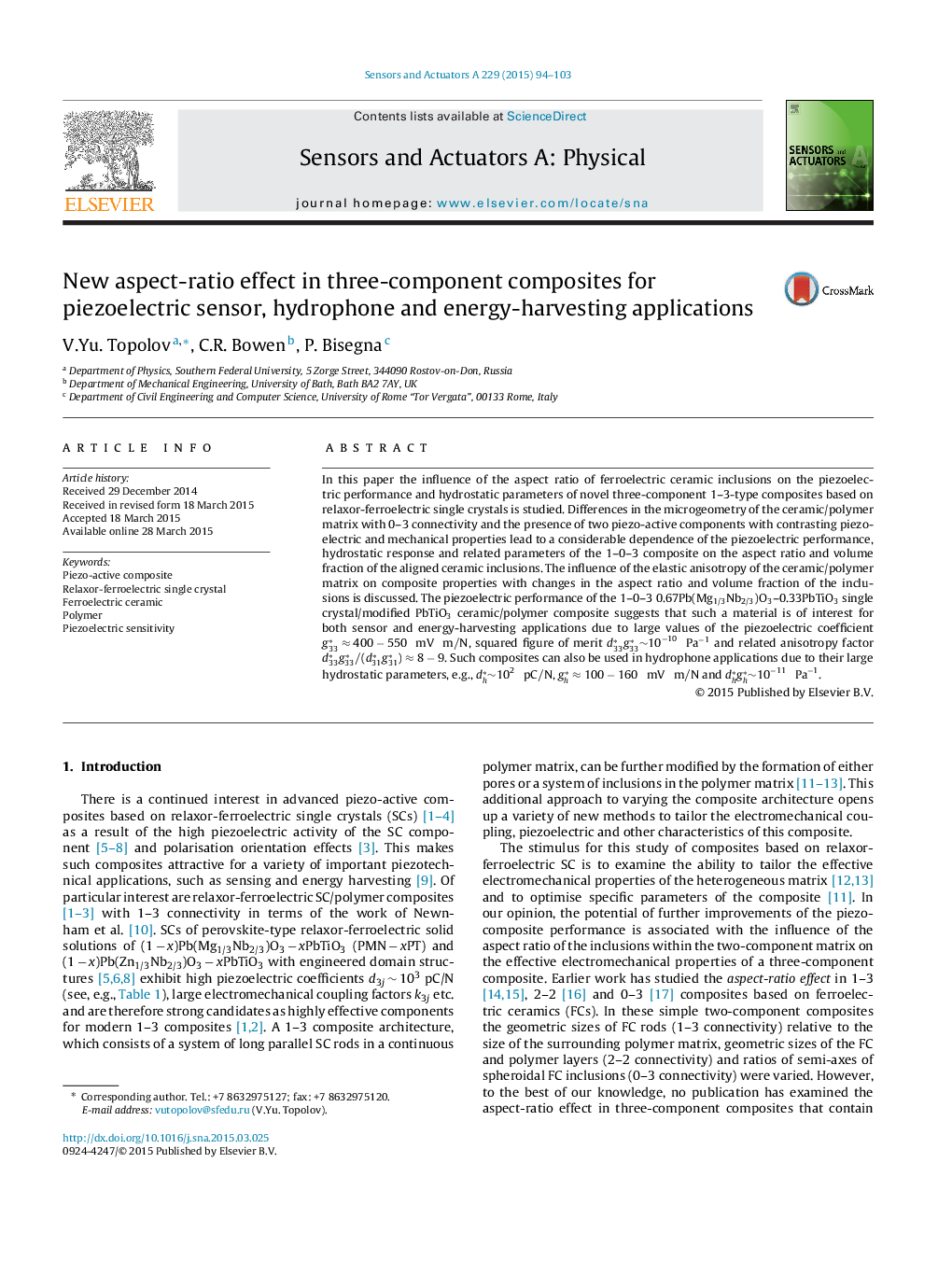| Article ID | Journal | Published Year | Pages | File Type |
|---|---|---|---|---|
| 736183 | Sensors and Actuators A: Physical | 2015 | 10 Pages |
•The new aspect-ratio inclusion effect is first revealed in 1–3-type piezo-composites.•Role of contrasting properties of components in achieving high performance is studied.•The ‘elastic anisotropy – aspect ratio’ link in the 0–3 matrix is first discussed.•We analyse piezoelectric sensitivity of the 1–0–3 composite for various applications.
In this paper the influence of the aspect ratio of ferroelectric ceramic inclusions on the piezoelectric performance and hydrostatic parameters of novel three-component 1–3-type composites based on relaxor-ferroelectric single crystals is studied. Differences in the microgeometry of the ceramic/polymer matrix with 0–3 connectivity and the presence of two piezo-active components with contrasting piezoelectric and mechanical properties lead to a considerable dependence of the piezoelectric performance, hydrostatic response and related parameters of the 1–0–3 composite on the aspect ratio and volume fraction of the aligned ceramic inclusions. The influence of the elastic anisotropy of the ceramic/polymer matrix on composite properties with changes in the aspect ratio and volume fraction of the inclusions is discussed. The piezoelectric performance of the 1–0–3 0.67Pb(Mg1/3Nb2/3)O3–0.33PbTiO3 single crystal/modified PbTiO3 ceramic/polymer composite suggests that such a material is of interest for both sensor and energy-harvesting applications due to large values of the piezoelectric coefficient g33*≈400−550 mV m/N, squared figure of merit d33*g33*∼10−10 Pa−1 and related anisotropy factor d33*g33*/(d31*g31*)≈8−9. Such composites can also be used in hydrophone applications due to their large hydrostatic parameters, e.g., dh*∼102 pC/N, gh*≈100−160 mV m/N and dh*gh*∼10−11 Pa−1.
